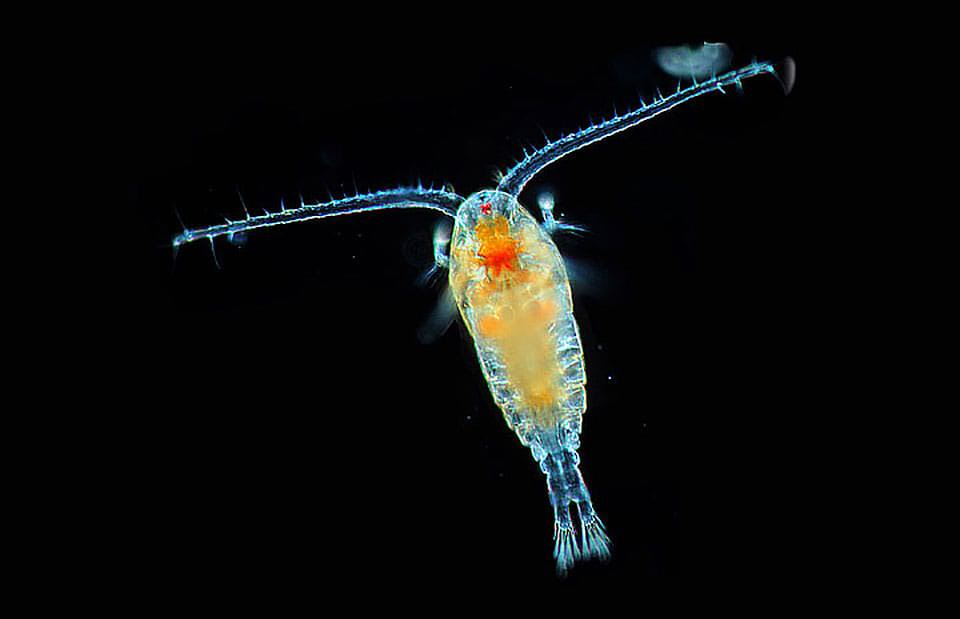Trying to Find the Edges of the Built World
The thought that has occupied me on my commute lately is about the worlds that we occupy.
Mostly, we (or at least those of us who live in North America) live in a built world. It’s a world almost 100% permeated by human and technological influence. It seems most of the time to be the whole world—but is there an edge to it?
For instance, take the act of surveying a street. Observe home after home designed and constructed by someone in the last 45-100 years, stretching along concrete poured by unknown people and manufactured using limestone, clay, and sand from an unknown source, with streetlights designed at some point, fabricated at another, from aluminum perhaps smelted in Canada but deriving from bauxite ore mined elsewhere.
As I drive along these streets, along asphalt roads, clinging to a steering wheel composed of a thin layer of split leather, metal, and mostly plastic, I find myself thinking an awful lot about plankton.

I came across a study recently (wonderfully titled, “Burning Buried Sunshine”) that calculated that it takes 98 metric tons of ancient plankton and plant life to make a gallon of gasoline. As the author of the study, Jeff Dukes, put it, “Can you imagine loading 40 acres worth of wheat – stalks, roots and all – into the tank of your car or SUV every 20 miles?”
It made me wonder just how much plankton was needed to make a pound of plastic. Using very rough figures and no actual scientific knowledge and math from 25 years ago only very occasionally revived for work purposes, we can make a couple of assumptions.
- To make a pound of plastic, you need about 0.4 gallons (1.5 litres) of crude oil. That means that, for every gallon of crude oil, we’re getting 2.5 lbs of plastic.
- To make a gallon of gasoline, you need to refine about 2.1 gallons of crude oil. That means that, for every gallon of gasoline, we’re getting 5.25 lbs of plastic.
- To get us back to the all-important plankton question, if a gallon of gasoline needs 98 metric tons of ancient plankton and plant life, then one pound of plastic needs 18.67 metric tons of the stuff.
But what can you make out of a pound of plastic? And just how much is 18.67 metric tons anyways?

A pound of plastic doesn’t seem like very much, although it is more than one of those tiny plastic pellets you sometimes see. (You may not believe me, but these items are actually called “nurdles,” which I assume is meant to distract us from how evil they are.) One of my first jobs as a young adult was with a vacuum truck company working on an oil refinery shutdown. (I wonder how many ancient plankton and plant life typically flowed through that refinery every day!)1 I joined the company before their contract for the shutdown got going, so one day they sent me and another guy to use the vacuum truck to clean up a spill of plastic pellets at a plastic production plant. They were so little! (A single nurdle, which is ~5mm long, weighs 0.00004 pounds, meaning that you’d need over 20,000 nurdles to make up a pound. According to one report, it takes about 600 nurdles to make a plastic bottle.)
In 2021, the average car contained 411 lbs of plastic. As you can imagine, that’s a lot of ancient plankton (and plant life). Using our extremely rough and definitely unreliable numbers, we’re looking at 7,673 metric tons of plankton to make a single vehicle. (That’s not counting the 98 metric tons of plankton required for every gallon of gas. My Toyota Corolla has a 13.2 gallon tank — 1,293.6 metric tons of plankton every time I fill up. It also doesn’t include the oil itself, which is synthetic and therefore perhaps too complicated for me to turn into “plankton units”. For what it’s worth, my car takes about 1.1 gallons of oil.)
Does any of this mean anything?
Finding the Edges of the Built World
I’ve complained elsewhere how alienating this built world can feel sometimes. Most of the material we use to build it in the first place is lifeless. Metals, concrete, glass: these materials are inherently inorganic. To be used in our modern era, they must be submitted to a variety of processes. They’ve changed and impacted and been impacted by the surrounding world, but they never contained life.2
Some material, though, were once living things. There’s wood, of course, which used to be one of the main products used to build this world. But even more ubiquitously today, there’s oil (and gasoline and plastic and all the other petrochemical products). Like the inorganic stuff, all sorts of processes are required to turn these once-living material into something usable. There are obviously profound differences in the sophistication and scale of these various processes—between, say, the processing of wood in a sawmill and the myriad complex processes undertaken in a petrochemical plant.
Yet, in the end, we’re still left with something that looks sort of like this:

Something alive. A living creature. Actually, a lot more than one living creature. Since the average plankton is 0.025 µg (micrograms), it would take a million million (1,000,000,000,000) of these little guys to get to just 1 metric ton.
Of course, the intent here is not to say that we should stop using plastic because it’s resulting in the deaths of countless plankton. These guys have been dead for a long time. And, at least in this post, the fact that the carbon their dead carcasses left behind has been processed and released into the atmosphere with catastrophic results is not my focus either. (Although I think that will ultimately be an essential point in developing a complete understanding of modern alienation.)
Instead, I’m wanting to know whether this momentary recognition of a created life and its lingering presence might represent an edge to the built world, an edge that we could trace and go beyond. Is it possible to find the enframing boundaries of what has been built and outside of that discover something not built, but given?
My brother-in-law made a stool recently out of a tree log disc. It’s beautiful. I know where the disc came from: a tree that once stood 70 feet tall in our backyard. I saw it after my brother-in-law took it down (and helped a little myself). Maybe it’s the story that makes this little stool feel like a reprieve from alienation. Or maybe it’s the life that the tree once had.
Would knowing the story of the plastic in my car or the ways its elements were once alive help to ground things a bit? (And, by “ground,” I mean this longing we have to find an anchor to counteract the sense of being dislodged from our creatureliness). I’m not yet convinced that it does. In fact, I feel a bit silly (or desperate) to even suggest that it might.
Nevertheless, while situated in the midst of a built world that nearly encompasses me, and as I cling to my steering wheel, realizing that the metallic-looking medallion of my car’s logo in the middle of the wheel is actually made of plastic and not metal, something does in fact seem to happen as I momentarily picture the infintesimally tiny lifeform whose death and decay underpins so much of our alienating world.
The built world shimmers for a second. I murmur a word of gratitude for the plankton (and of course I can’t help but picture Sheldon J. Plankton himself as I do this). And then I keep driving.